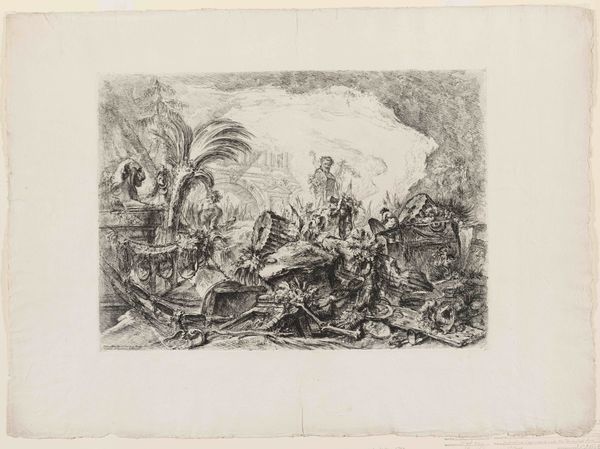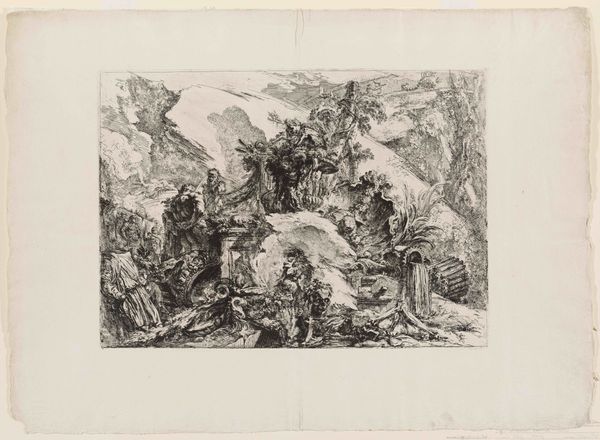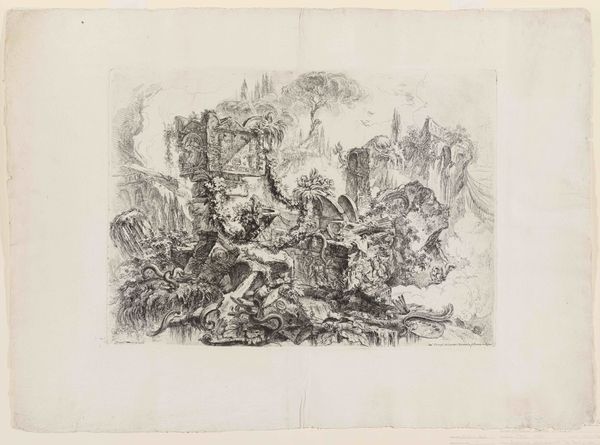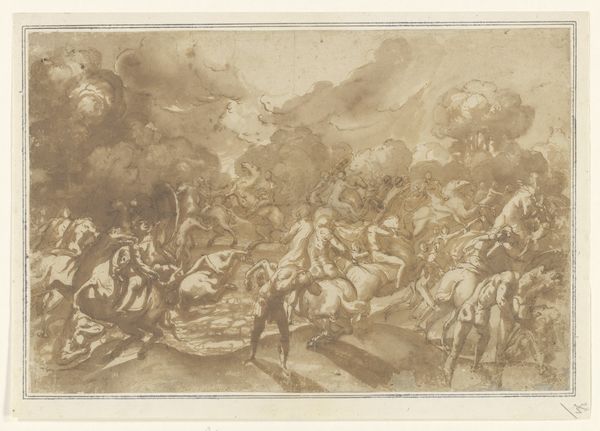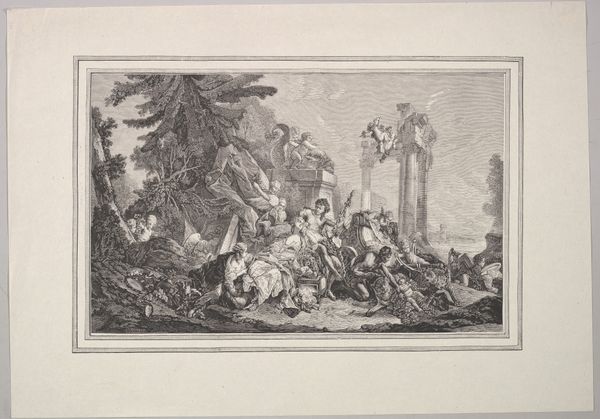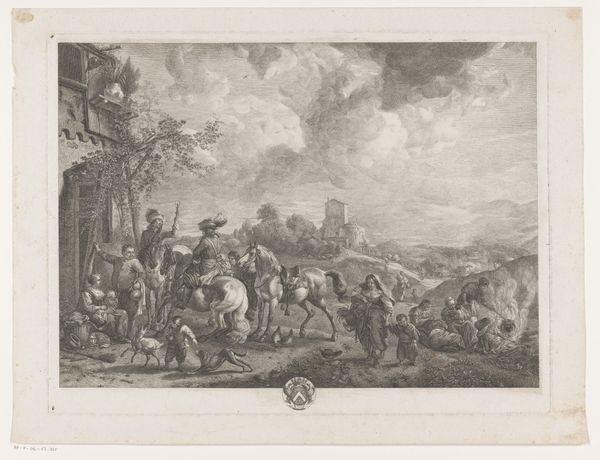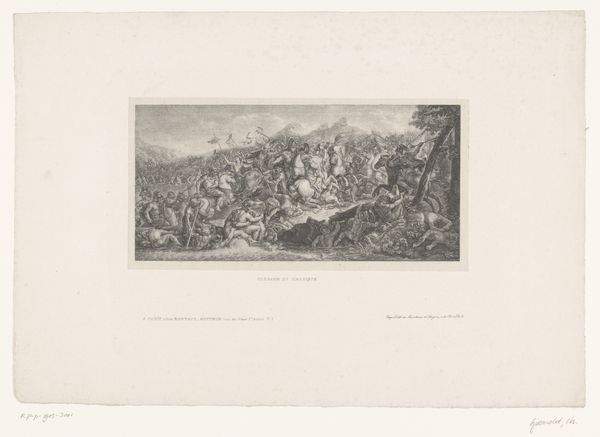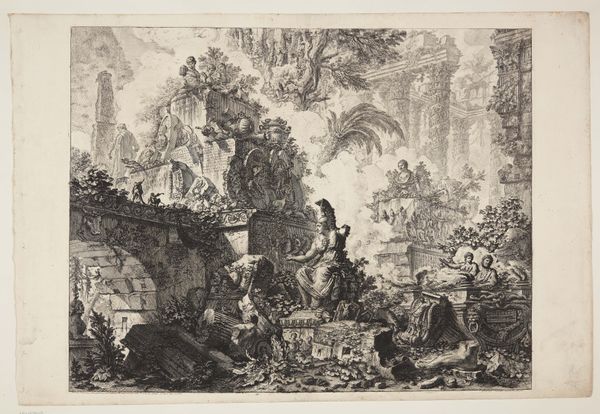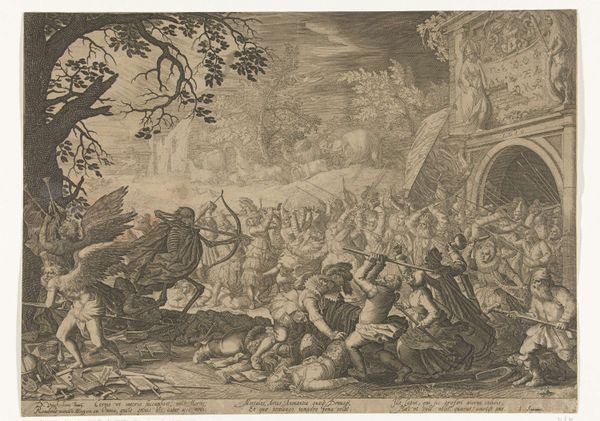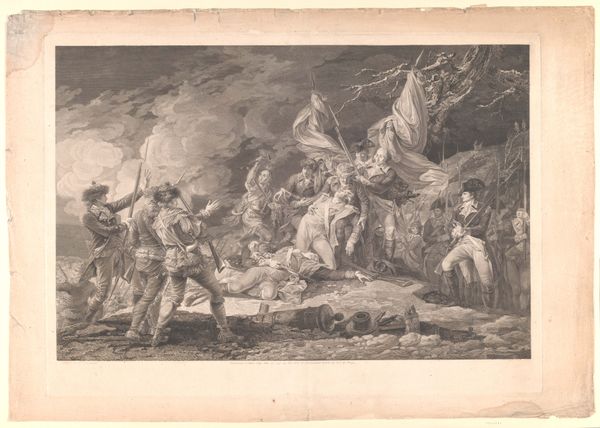
The Triumphal Arch. Decorative capriccio. Architectural ruins in the foreground with medallions, a sphinx and palm tree to the left and a monumental archway in the background 1750
0:00
0:00
print, engraving, architecture
#
ink drawing
#
allegory
#
baroque
# print
#
landscape
#
line
#
cityscape
#
engraving
#
architecture
Dimensions: 390 mm (height) x 545 mm (width) (plademaal)
Giovanni Battista Piranesi created this etching, ‘The Triumphal Arch’, in 18th century Italy. It depicts a fantastical scene that blends classical grandeur with romantic decay. Piranesi was known for his dramatic architectural fantasies, often playing with scale and perspective. This piece reflects the 18th-century fascination with classical antiquity, but also hints at the transience of power. The triumphal arch, a symbol of Roman authority, is presented here amidst ruins and overgrown vegetation. This contrast creates a dialogue between past glory and present decline. Italy at this time was a patchwork of states, with the ruins of the Roman Empire serving as a potent reminder of its fragmented political landscape. Piranesi’s work engaged with the social and cultural climate of his time, reflecting on themes of national identity and historical memory. To truly understand Piranesi’s vision, we must consider the complex interplay of historical context and artistic interpretation. Consulting architectural treatises, social histories, and period literature, can help us appreciate his work.
Comments
No comments
Be the first to comment and join the conversation on the ultimate creative platform.
